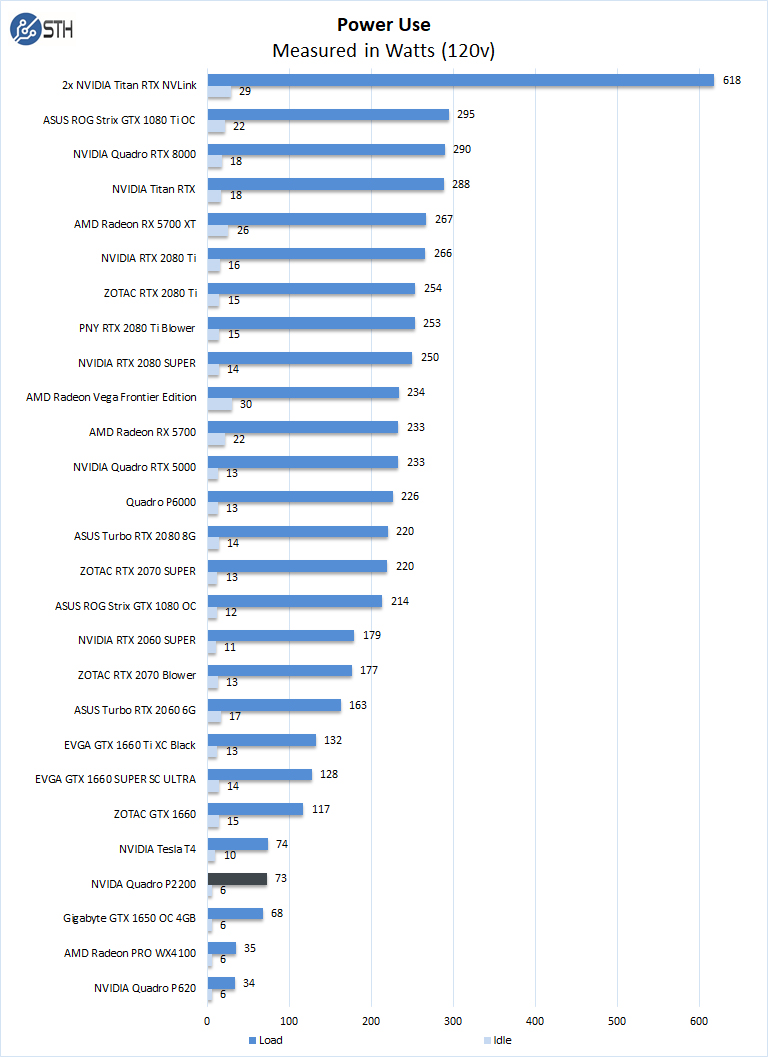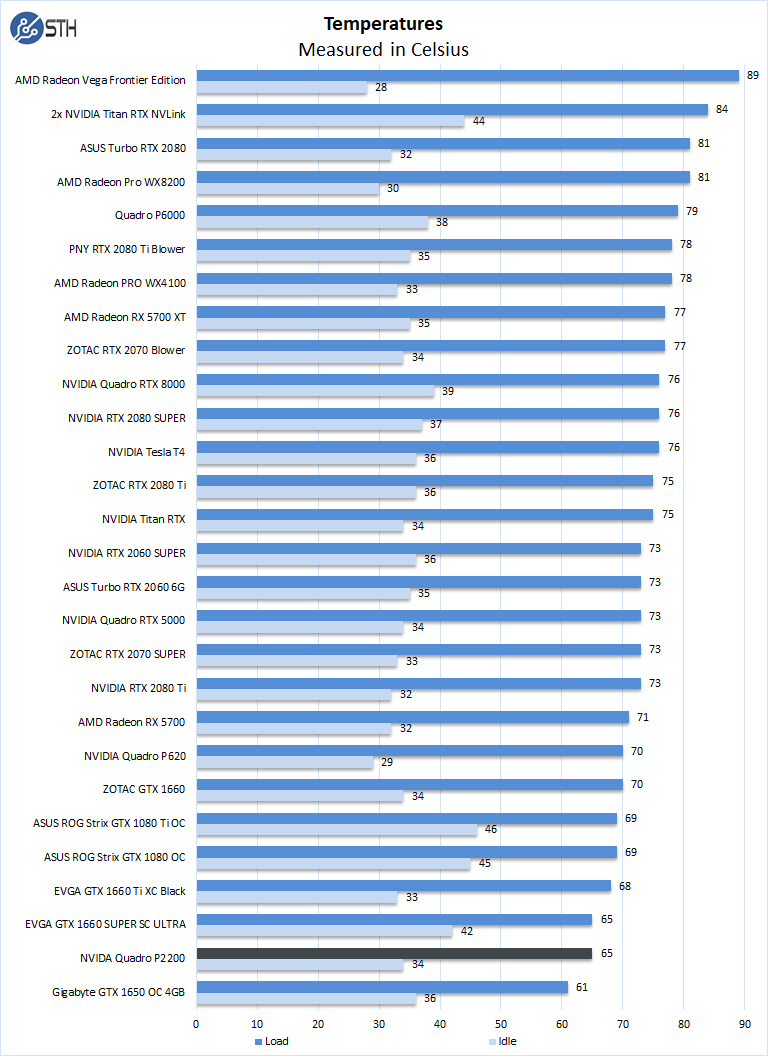Power Tests
For our power testing, we used AIDA64 to stress the Quadro P2200, then HWiNFO, to monitor power use and temperatures.

After the stress test has ramped up the Quadro P2200, we see it tops out at 73W under full load and 6W at idle. We can see this is a big step up from the NVIDIA Quadro P620 Low Profile card and the AMD Radeon PRO WX 4100 in terms of performance but also power consumption.
Cooling Performance
A key reason that we started this series was to answer the cooling question. Blower-style coolers have different capabilities than some of the large dual and triple fan gaming cards.

Temperatures for the Quadro P2200 ran at 65C under full loads and 34C at idle. Our tests show good temperatures for a GPU with a blower type cooler. Aiding the effort here is the low power consumption. Still, we see lower max temperatures than the Quadro P620 that uses half the power. This is a good illustration of why having more room for better coolers is important to the industry.
Final Words
We found the Quadro P2200 to be an excellent graphics card for entry-level workstations. It boosts performance levels over the Quadro P620 and runs cooler with the blower-style fan. One gets more memory and more performance but at twice the power and moving up to a larger form factor. In many ways, that is going to be the real competition for the Quadro P2200, those who are weighing stepping up from a lower-end card.
For those focused on GPU compute performance, one of the newer and larger Quadro RTX cards is likely a better solution. We see this more as a sweet spot between Quadro certified drivers for ISV applications and ease of integration into systems rather than being a performance-optimized card.
Still, it is about twice as expensive as a Quadro P620 with street prices in the $420 to $450 range. If one can fit the larger GPU, features like the 5GB of GDDR5X versus 2GB on the Quadro P620 can have a noted impact. As an example, at 4096×2160 resolution the Quadro P2200 can run all four displays at 120Hz while the P620 can only handle 60Hz operation.
Overall, this is a neat little card. Even if it is not the fastest around we can see the appeal in many markets due to its feature mix.




Wouldn’t a better test have been to include the Quadro P2000, which this seems to be an iteration of ?
Evan – we did not have a Quadro P2000 and frankly, I did not want to go to older parts.
One important use case of these 75W cards is transcoding media from one format to another. It is the cheapest Nvidia card that can transcode media without artificial limitation to two streams.
I have both P2000 and P2200… the difference in performance is ~5-10% depending on benchmark.
But it’s a moot point… since the P2000 and P2200 cost the same and have the exact same feature set and power/thermal budget everyone should just buy the P2200.
Many of the customers are just using it for video transcoding anyway.
The P2000 is also no longer coming off the production line.